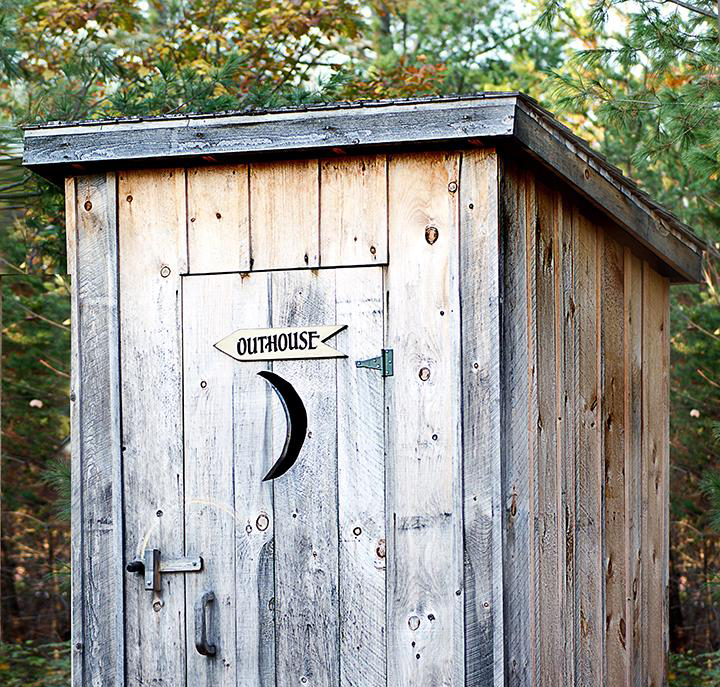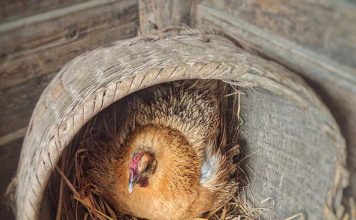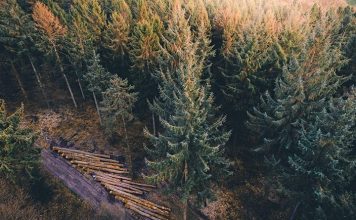 |
|
| Issue #48 • November/December, 1997 |
What if that snowstorm turned to a blizzard or an ice storm lasted for days, knocking out the power and phone lines? Would you be prepared? Or what if you lost your job, or an illness or injury prevented you from working for a lengthy time? Could you survive? Or what if you had a severe economic depression? Could you and your family cope?
Commonsense preparedness is not a new concept based on the fear of an Armageddon. It is an old idea that goes back to biblical times when Joseph advised the pharaoh to store food for the coming famine. In modern times Mormons, Mennonites, Amish, and even our grandparents lead or have led lives based on being prepared for unexpected hard times.
But though once art of most folks’ everyday lives, commonsense preparedness today has fallen by the wayside, and vast numbers of people are totally unprepared for even the smallest emergency.
There is much you can do to remedy this, and it starts with taking stock of just what makes your household tick. Here is how my family has prepared for the unexpected:
Water storage
A human can live much longer without food than without water, so having adequate water available is at the top of any list. When calculating your family’s water needs, include water for sanitation, that is, for flushing the toilet as well as washing one’s self and cooking utensils. The toilet doesn’t have to be flushed after every use, and a person doesn’t need a 15 minute shower twice a day, but some water is necessary.

A well-stocked pantry. |
A supply of potable water is a must. We keep 30 gallons of drinking water stored in 5-gallon jugs in our house at all times. We keep the same amount stored in old, well-washed and bleach-rinsed plastic milk jugs to use (sparingly) as wash water. Besides this, we are fortunate to have two 1,000-gallon stock tanks in the pasture. They are kept full and are reasonably clean—clean enough for flushing the toilet or washing. We also have two small springs and a good creek which runs year-round, half a mile from the house.
It is a good idea to have a good water filter on hand which reliably filters contaminants out of the water, including giardia, a parasitic protozoa which causes severe diarrhea and inhabits even the clearest of mountain streams. In some emergency situations, normal community water may become contaminated and require filtration to be safe to drink. Should you not have a filter, which unfortuantely are usually pretty costly, boiling the water for fifteen minutes provides safe drinking water under less than desireable situations. Another option is using water purification tablets, which make the water safe but yucky tasting.
Be sure to have enough water on hand to take care of livestock and pets, as well as your family. And include a jug of water in your auto emergency kit, especially in the summer. Drinking water is a must, but water enough to fill a hot radiator is a close second.
Food
Everyone immediately thinks of food when making up a preparedness list, with MREs (Meals Ready to Eat), the military’s replacement to the old C Rations, high in popularity. But few folks really think their way through a preparedness pantry, for it is best not to prepare for a week-long “emergency,” but rather have enough stored food on hand to last the entire family for two years. Two years? Yes. One never knows what the future will bring, even when you raise most of your own food. For this reason we always can all of our large garden’s produce, even if it seems extravagant, for who knows if next year’s crop will be hailed out and the year after that killed by drought or insects. And who knows if someone will lose a job or health, or have a relative or friend in need move in with them, creating a real need for extra food.
We keep wheat, stored as whole grain because it keeps longer, and we grind it with our hand mill. We also keep whole corn, dry milk, margarine powder, powdered eggs, flours, corn meal, honey, and yeast. Also a huge variety of home-canned foods which, if processed right and kept reasonably cool and dry, last nearly forever. Sure, you may lose some nutrients over time, but by using fresh vegetables and fruits to start out, you can counterbalance any loss easily and have a full stomach. These home-canned foods are more than just tomatoes, beans, and peaches. I can year-round making my own chili, taco filling, beef stew, smoked fish, turkey noodle soup, etc.—all of which are easy-to-heat taste treats.
We also dry a lot of our produce and fruit, sealing them in canning jars to preserve freshness. I dry berries, cherries, peaches, apples, pumpkin, squash, onions, peas, carrot chips, banana chips, fresh and cooked corn, peppers, mushrooms, and more, all of which are easily and quickly rehydrated and ready to use.
I always make sure we have plenty of flour, baking powder, sugar, salt, spices, and shortening as well—all bought when sales are on.
Some preparedness foods are bought by mail and shipped to us sealed in #10 cans (about 1 gallon) or white plastic buckets. But these can be pricey.
Many items, such as our dry beans, flours, sugar, baking powder, etc. we store in popcorn tins, glass gallon-jars, etc., all tightly sealed against dampness and insects. Our wheat and whole corn is freezer treated for three days in sealed containers, then dumped into 30-gallon food-grade garbage cans with tight-fitting lids. A few bay leaves thrown in on top further protects the grain from weevils.
Most foods, such as spices (bought economically at local health food stores by the pound) and baking powder keep very well and long-term in jars that have tight-fitting lids. If the food comes from the grocery store in sealed containers, we leave them in those containers as they will keep much longer than the “freshness date” stamped on the box or bag.
While all this food does keep very well in a dry, cool pantry, away from the light, it is important to keep track of the dates you put it up or purchased it, and to keep rotating your stock through everyday use so that the oldest food is eaten and replaced with fresh food. This way you will never lose any of your stored food.
But what about a freezer full of great food? A freezer may be handy, but it is not an option for emergency food storage. First of all, frozen food is only good frozen. If the power goes off, and you don’t have a backup electrical system such as a generator or a photovoltaic system to keep your freezer going during the entire power outage, your stored food will thaw. I know; I lost a third of my very large freezer full of meat, poultry, and vegetables during a week-long power outage—and I would have lost more if I hadn’t been able to can the rest. I haven’t relied on a freezer, other than Mother Nature’s on a temporary basis, since then.
Another reason not to depend on a freezer is that there are instances where your family may have to quickly evacuate your home, and it’s very nice to be able to load up the truck with a good load of your pantry food, even if you are only going to spend two weeks at your mother’s until the emergency passes.
We always keep some emergency food in our truck, behind the seat. We can’t afford MREs, but there’s jerky, candy bars, dried fruit, crackers, a few tins of Spam, and dried soup. We also keep a box in the shell that contain a small propane stove, frying pan, pot, sleeping bags, etc. Recently, our fuel pump went out on our truck while we were on the freeway, leaving us stranded for seven hours, and we got hungry. Not a big emergency, but life is full of little emergencies.
First aid/medication
A complete first aid kit containing any prescription medicine needed by family members is a must in any home. I laugh at many first aid kits that consist of just a few bandaids and a tube of ointment. Ours is a field kit contained in a heavy duty shooter’s box—similar to a fishing tackle box, but heavier, and with a deep lower section. Both my husband Bob, a certified nurse’s assistant, and I, a veterinary field technician, have extensive medical experience so our kit is beefed up. But every kit should include at least the following: a Red Cross first aid manual, heavy and small scissors; tweezers, several 20-gauge hypodermic needles (nothing removes slivers and thorns better), large fingernail clippers, at least two rolls of 1-inch and 3-inch sterile gauze, a box of sterile 3-inch gauze pads, sterile cotton, a bottle of sterile saline solution, a large tube of topical ointment containing antibiotics or sulfa and a topical anesthetic, a jar of A & D ointment, eye drops such as Visine, a roll of elastic bandage about 3 to 4 inches wide, two small towels, an enamel pan for water (ours fits snugly in the bottom of the case taking up no extra room), a denture repair kit, a temporary filling kit, a box of assorted bandaids and butterfly sutures, a roll of surgical adhesive tape,

Bob’s broken leg from a snowmobile wreck handled well at home because there |
Calamine lotion, bottle of aspirin (and Tylenol for children), antihistamines, cough medicine, cough drops, antibiotics (if your doctor will write a prescription for your emergency kit for you), and any other medicines you or your family may need unexpectedly. A bar of plain soap and antiseptics, such as alcohol or Betadine, are also necessary. I would also recommend an antifungal, as used for jock itch or athletes foot, and a treatment for vaginal yeast infection. Such problems often occur making a little emergency a big emergency in terms of comfort.
Our kit also includes an intravenous kit, IV electrolytes, dextrose solution, suturing material and needles, forceps, scalpels and blades, injectable local anesthetic, epinephrine, antibiotics, splinting material, a blood pressure cuff, stethoscope, etc., all used of course in an emergency where no medical help would be available.
Your kit should always be readily available and it should also have your doctor’s phone number and emergency numbers, such as the hospital, poison control, police, fire, etc., written in permanent marker under the top. We also keep a mini-kit under the seat of the pickup. It’s a scaled down version of the larger kit but it is also quite comprehensive.
No first aid kit is worth a darn, though, unless a person has some medical knowledge. A basic Red Cross first aid course including CPR training is necessary, as is a little additional study from books found at your library. A few minutes spent could save a family members’ life.
Warmth, cooking, light
Unfortunately, most of our severe weather and most of our family emergencies, such as job loss, occur during the winter when the weather is cold and blustery and the daylight hours are short and depressing. It is very important to consider what would happen if the power was off in your house. Most modern homes heat with gas furnaces, but you get no heat unless the electric blower moves the heat to the rooms. So, we’ll heat with our kitchen stove, folks say. Also fine, unless your stove is electric or a “modern” gas stove with electric ignition.
Then, there are folks with an all electric home. Lots of luck if the power goes out for any length of time, especially during a blizzard or severe ice storm. Many of BHM’s readers are fortunate enough to have a photovoltaic system and backup generator, but even these systems can go down.
Our family lived without electricity for five years in the mountains of southwestern Montana and we enjoyed our life staying warm and cozy without power using wood stoves both to cook on and to heat the house. Now we live on the high prairie of northern New Mexico where winter northers can blow snow at 40 mph. We still cook with a wood kitchen range, which also helps heat the house, but we have wall propane furnaces, too, the kind without electric blowers.
No home should be without a backup heating system which requires no electricity. There are alternatives to wood should wood heat be unavailable. Today, there are efficient small propane heaters which take up little space and will heat a room or two at small cost during a power failure. Be sure the heater is installed properly and used safely when needed. There are also kerosene room heaters which work well when used with caution. Be sure adequate fuel is safely stored outdoors, be it propane or kerosene.
In many climates, a heater below your home’s water lines is necessary to prevent frozen and bursting pipes. And if your water comes from a well, be sure there is a heater safely burning in your well house or, when the electricity comes back on, your water may be frozen and presenting you with a real problem. We have a small, ventless, propane heater in our well house which we light during severe and windy winter weather. It keeps things unfrozen until the weather moderates and does so without electricity and at very little cost.
Never use an unvented heater of any kind, unless it is approved for home use, unvented, as your family may end up dead due to asphyxiation.
Also, in your truck or auto, never depend on the motor and heater to keep you warm. We keep a Coleman lantern and fuel in a box in the back of the truck which can be used for heat as well as light during an emergency. Always keep a downwind window cracked open, to prevent asphyxiation.
In addition, we keep heavy sleeping bags in a plastic box under the truck’s shell along with a change of winter clothes which includes old, but warm, winter boots. Generally, staying with the vehicle is the best course of action during an emergency as a person is protected from the weather and easier to find than if stumbling about in a blizzard. But, if you have to walk, it is best to do so in warm winter clothes, with a sleeping bag wrapped around you, than in mall clothes and tennis shoes.
Back home again, cooking and lighting should also be considered. If your backup heat is wood, you can cook meals on most wood heaters. But many propane heaters do not facilitate cooking. A simple solution is a small, countertop propane stove. A two-burner stove with flexible hose, connected to a 30-pound propane “pup” or portable tank, works great. We also carry a mini backpacking propane stove in our emergency box in the back of the truck. It takes up only 24 square inches, weighs a few ounces, and quickly connects to a disposable propane cartridge, giving instant heat. We once cooked supper on it, just out of Yellowstone park, in the middle of the highway, while waiting for the park service to clear a mud slide off the road. Another option is a Coleman camp stove which fits right on the counter and provides two burners of cooking power instantly.
Of course, when the power is gone, so are the lights in most folks’ homes. Candles and flashlights are always a part of a well prepared home. But candles burn out in a short time and are a bit unsafe, while flashlight batteries soon weaken and die. We have four filled kerosene lamps on top of the cupboards at all times, along with two Coleman lamps (including replacement globes, in case of breakage, and extra mantles). The kerosene lamps are nice, but we like to read on stormy nights, and you can about go blind trying to read by kerosene unless it is a pricey Aladdin lamp.
As with the heating fuel, be sure you have adequate fuel stored outside, where it is safe.
Emergency lighting in a vehicle is also necessary. As I said, we have a Coleman lamp in the truck at all times, but we also have a box of 12-inch candles and a good flashlight as well. Having light in the vehicle can provide cheer but more important, it may prevent your rig from being hit by a passing motorist as well as greatly improving your chances of having someone see your problem and stop to help.
Sanitation
About everyone takes flushing the toilet for granted—until it won’t flush. For this reason, be sure you have at least 50 gallons of water available for sanitation reasons, alone. You don’t need super-clean water to flush a toilet. After all, you know what you’re flushing. You can melt snow or go to a nearby ditch, pond or creek and haul water to dump into the toilet, but even this water should be used frugally. Only flush the solid stuff, putting toilet paper in a bag to dispose of later. Don’t be so frugal that you plug the toilet. Flush when you must, not just out of habit. For this reason, keep a bucket of water next to the toilet, but don’t dump it in the back, as most folks will automatically flush when they’re done, without thinking. This way you will save much water.
Keep in mind that there are usually 30 to 50 gallons of clean water in the water heater after the pressure is gone. You can draw this water off through the faucet on the bottom using a short length of garden hose. But be sure the electricity or gas is turned off first, because without water the dry tank may burn out when the power comes on. A water bed is also a source of sanitation water, but it should never be used for drinking water because of the chemicals and contact with nonfood-grade plastic.

Every home should have an outhouse |
If possible, have an outhouse in your yard. Yes, an outhouse. Even a large lot in the city can house an outhouse, carefully built to resemble a garden shed, and only used for emergencies. I know it’s against code, but so is a bucket full of poop in the bathroom. Personally, I’d rather use the outhouse, being discrete, i.e., sneaky, if necessary.
Sanitation also includes things such as sanitary napkins, toilet paper, diapers, etc. There should be a good supply of all of these plus soap, deodorant, and bleach in the pantry. (We’ve spent so long in the woods, that we never leave home without a good supply of toilet paper. The heck with American Express.)
Even when a baby is kept in cloth diapers, it is a great idea to keep a couple of bags of the right size disposable diapers in a closet and one in the vehicle. Washing dirty diapers is never fun, but in an emergency it is not what you need to be doing.
A few sanitary napkins crammed in the glove box of the vehicle can save the day—or days. We also keep a small container of baby wipes and a bar of soap there too. In your house, sanitary products should be available to supply the family for two years. The same goes for laundry detergent.
One note here: You can wash clothes in a sink, tub, or bucket, but having an old wringer washing machine around, powered by a portable, inexpensive generator which can also provide electricity for short periods, will make laundry day a snap. In the mountains, we ran the generator once a week while I washed clothes and Bob and David watched a movie on our VCR—a real treat for all of us.
Even in the winter, clothes can be dried on a line outdoors, although it takes a week during very cold weather to get them thoroughly dry.
Transportation
Having reliable transportation is essential in any emergency situation. Keeping a vehicle in the best shape you can afford is necessary. Having a thousand dollar stereo system means nothing if the gas tank is kept empty and the fan belt needs replacing. Good tires, belts, hoses, windshield wipers, a good spare tire, jack, a tire iron that fits the lugs, jumper cables, and a tool box with good, commonly used auto tools including a battery terminal cleaner are needed in any well-prepared vehicle. In snow country we always carry a set of heavy tire chains for at least the front end of our 4×4 pickup, and if we expect severe weather we carry a full set. Every auto or other vehicle should carry tire chains to increase traction on snow and ice. Have the means to keep those chains tight, too, as loose chains break or are thrown.
Preparing a vehicle should also include keeping necessary fluids in the trunk. These are oil, brake fluid, starter fluid, gas line antifreeze, windshield wash, transmission fluid (automatic transmission), and radiator coolant/antifreeze. In an emergency, you may not have access to them when you desperately need them.

Two stages of emergency traavel snowmobile and horse. Survival kits and tools are stowed safely onboard. |
A bag of sand for added traction, a shovel, a length of hardware cloth (for traction when stuck), a fire extinguisher, a tow chain, and a pair of old gloves for dirty work are also great additions to the trunk.
It is an excellent idea to have a pair of five-gallon gas cans full of fresh gas at home, stored safely outdoors, but handy. And to keep the gas tank nearly full at all times. You never know when you may have to take an injured or ill person to a hospital in the night or evacuate your home because of a storm, civic disturbance, or even a toxic spill from a passing truck. And at such times you don’t want to have to search for a gas station. As with food, rotate your gasoline, as stale gasoline will not be a dependable fuel.
In addition, we always carry an extra upper radiator hose, fan belt, box of fuses, and a roll of duct tape behind the seat of our pickup. The radiator hose and fan belt are easy and quick to change, and duct tape will temporarily repair a host of breaks.
A Chilton’s repair manual for your vehicle is also a good idea as it provides the specs for your particular vehicle, and it explains in detail how to repair hundreds of common, and uncommon, problems. Likewise, a road atlas and compass are invaluable in the vehicle.
Family readiness
There are a few things that the family should sit down and discuss. Everyone in the family should know how to shut off the gas at the meter or propane tank when huricanes or tornadoes threaten, or in case of earthquake to prevent possible explosion or fire. Every member should also know how to shut off the power to the house from the main box to prevent electrocution accidents. You should also have a plan as to where to meet should an emergency find the family separated.
In case of fire, there should be a plan for escaping from the house and for handling small fires, and everyone should know how to use the fire extinguishers and know where they are located, both in the house and the vehicle. As explained earlier, all members of the family should also have knowledge of basic first aid.
It is an excellent idea to have cash available at all times at home. Some folks advise having enough in savings to cover the house payment, utilities, etc. for six months to provide a safety net in case one of the wage earners is layed off, fired, or injured and unable to return to work for a few months. But a family should have cash stored in a safe place at home to cover local emergencies or an evacuation. Remember that in power outages credit cards and ATMs will not work, and banks are not likely to be open.
Personal preparedness
It is an excellent idea to have a backpack with you wherever you are, i.e., your home, on the road, or workplace, that contains at least enough emergency gear for three full days. This should include basic first aid supplies, a space blanket, MREs, Spam or other filling, a lighter, knife, pocket transistor radio, toilet paper, change of warm socks, compass, water, minimal fishing gear like a length of line and a few small hooks and flies, and a length of snare wire.
Even the kids appreciate some “survival” gear in their own backpacks, provided as per age and experience. The better prepared they are, the safer they will be.

Digging out for the foundation of our new pantry addition to allow for two years of food storage. |
We never leave the ranch, even to go hunting in familiar territory, without a fanny pack containing basic survival gear and a few strips of jerky, trail mix, and candy bars. I also routinely carry two lighters, two pocket knives (one with a screwdriver blade and can opener), and a film canister in my pocket containing a few feet of fishing line and a couple of small hooks. My husband, Bob, carries a belt knife, pocketknife, and a Leatherman tool—which is many tools in one.
Who knows when an ankle may be severely sprained, and we may have to wait for some time to be “rescued.” Personally, I’d rather be rescued sitting in front of a small fire, munching on jerky and drying my socks than sitting huddled in the cold, looking pathetic.
In our truck, we even carry a telescoping fishing rod and a complete fly vest, full of lightweight tackle, as well as a rifle and box of ammunition. We travel in pretty remote country a lot, and could quite possibly need the rifle to signal for help—three shots in a row—or to bring in some food should we be stranded for some time.
As you can see, preparedness is a personal art, depending on your location, where you could possibly end up in an emergency, your lifestyle, experience, and your perspective on future hard times.
Most families can deal with major emergency situations with relative ease. And you get better with practice. If you get so you deal with preparedness as a sort of game, rather than an emergency in the future, you can get very good at dealing with problems and hard times. When a person or family feels that they are working to be secure, they are less apt to feel helpless or at the mercy of fate and can go happily on about their business, no matter what is going on around them. Preparedness becomes an art, and the whole family can suggest ways to improve, with enthusiasm instead of fear.















As always, I love reading your articles. Thanks for great tips!